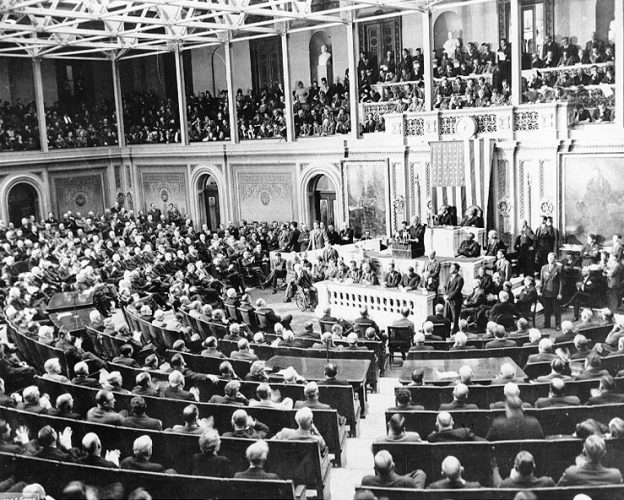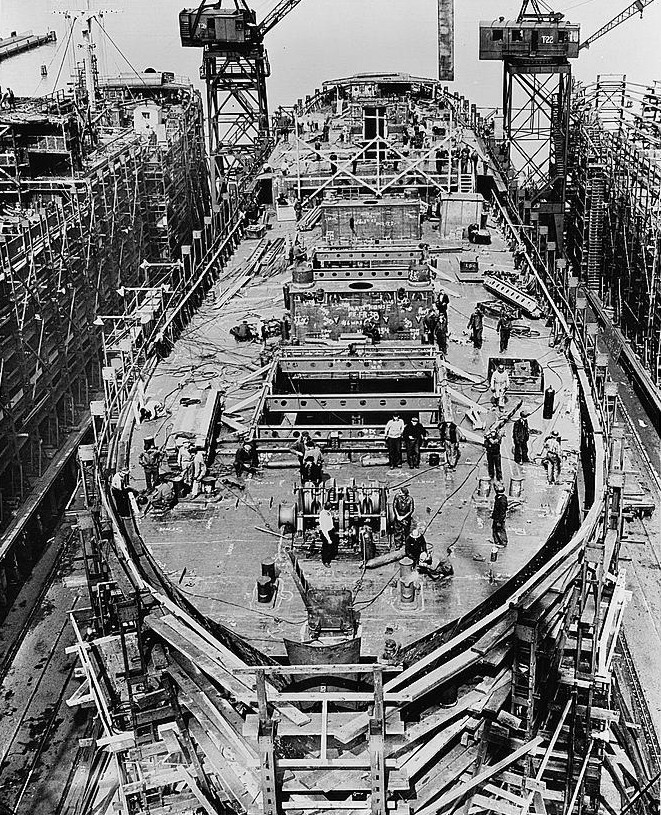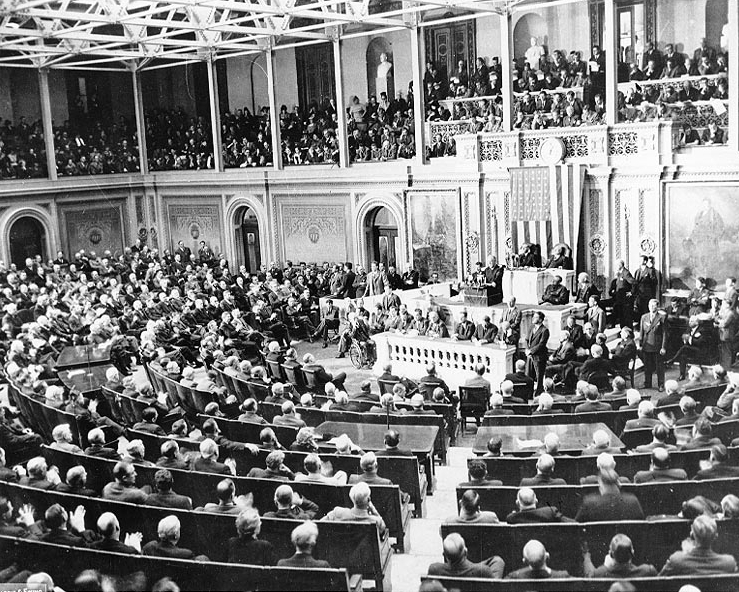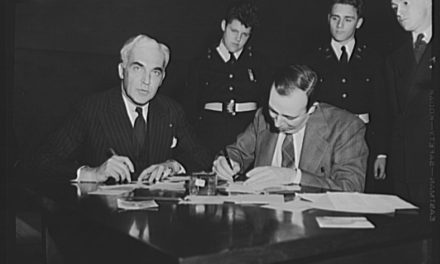
The House of Representatives met on Capitol Hill to discuss the necessity of the war funding bill. From U.S. National Archives.
The largest bill ever proposed by Congress passed the House of Representatives this week. It approved $32 billion to provide additional weapons and tools of war, to increase ship production and to support U.S. allies.
Three to four hours of debate took place before the vote. Although some representatives raised concerns, the House approved the bill unanimously, 371-0.
Rep. Clifton Woodrum (D-Va.) was among the many who spoke in favor of the measure. “This bill today speeds up the great defense program, sends aid to those valiant people out there giving their blood in this cause, and sends them some implements with which they can fight this war,” he said. Given the vote count, it is evident that most of Woodrum’s colleagues shared that attutide.
The total $32,762,737,900 of war funds is broken down between departments. The War department will receive roughly $23.5 billion, with the goal of providing additional weapons to the 3.6 million men currently overseas. The Maritime Commission will receive $1.5 billion in direct appropriations along with $2.4 billion for ship construction. The funds will also provide $5.4 billion in Lend-Lease aid to U.S. allies.
“There will be a strain on manpower,” said Undersecretary of War Robert B. Patterson, warning of the consequences of not passing the bill. The funds, he explained, are needed to finance a vast flow of munitions. Army Deputy Chief of Staff R.C. Moore added that to ensure that troops are properly equipped, there must be “a necessary cushion to permit prompt and efficient supply.” All of the material covered by the Department of War funds is expected to be produced this year. The army plans to spend about $14 billion for tanks, guns and ammunition, $4 billion for the expansion of war production, $3 billion for transportation, $1 billion for communication facilities and another $1 billion for the Army Corps of Engineers.
The Maritime Commission will build 1,476 additional cargo ships with a tonnage of 16 million tons, resulting in a total of 2,877 ships with a combined tonnage of nearly 31 million. Maritime Commission chairman Emory S. Land confirmed a scheduled production of 784 vessels for 1942—the commission will be able to construct two ships per day.

The production of two ships per day is one goal of the new war funding bill. From Wikimedia Commons
The Lend-Lease fund would increase the total appropriations for allied aid to over $17 billion. Secretary of Agriculture Claude R. Wickard confirmed that food is the largest item in the allotment, at $1.3 billion of the total. Most of that money would go toward protein-heavy products like meat, dairy and dried eggs, and less on abundant foodstuffs such as corn.
A few minor concerns surfaced during the discussion of the bill. The Appropriations Committee questioned army officials regarding allegations of waste in other defense programs; defense brokers had amassed “untold millions” on war contracts, one member said. The Department of War insisted they were taking all possible measures to address the problem.
The issue of soldiers and ammunition was also brought up to the Department of War during debate. The Appropriations Committee questioned if there would be enough manpower to effectively carry out the War Department’s proposed initiative of weapon and tool production. The appropriations committee also stressed the need for finding a balance between munitions and the men who would use them. General Moore assured the committee that there will certainly be enough manpower.
Sen. Warren Austin (R-Vt.), the Senate minority whip, questioned the vigorous offensive on the distant battlefronts that the war bill proposes. He suggested that the funds be used to shore up defenses at home instead. Senator Austin read a letter from George C. Marshall, Army Chief of Staff, in which he expressed concern about the need to protect U.S. coastal communities and to guard sensitive installations throughout the nation.
“Never in all history has a nation been faced with the war costs of the magnitude that confront us; the amounts are appalling,” said Rep. Clarence Cannon, (D-Mo.). Nevertheless, the consensus among the nation’s leaders is that these measures must be taken in order to achieve a U.S. victory.
“Let us consider [this bill and others that follow] on their merits,” said Rep. Woodrum. “Let us consider but one objective, and that objective is to win the war.”
Sources:
“Nearly 23 Billion is Asked for Army.”New York Times, Feb 10 1942, p. 3.
“A $32 Billion Bill.” Wall Street Journal, Feb 19 1942, p. 4.
“32-Billion War Fund Voted; ‘Home Fronts’ are Ruled Out.” Frederick R Barkleys. New York Times, Mar 03 1942, p. 1.
“House Votes 32 Billions for Weapons.” Robert De Vore. The Washington Post, Feb 18 1942, p. 1.




